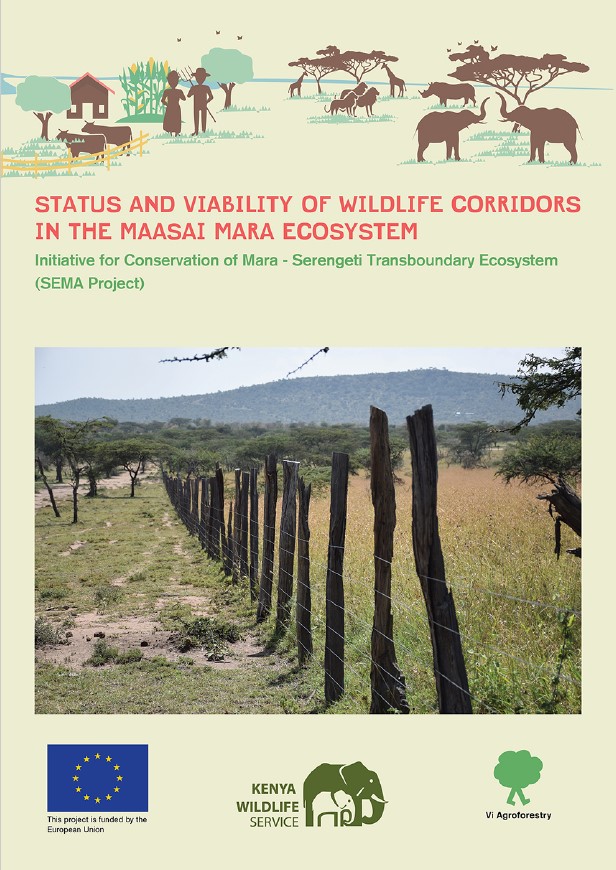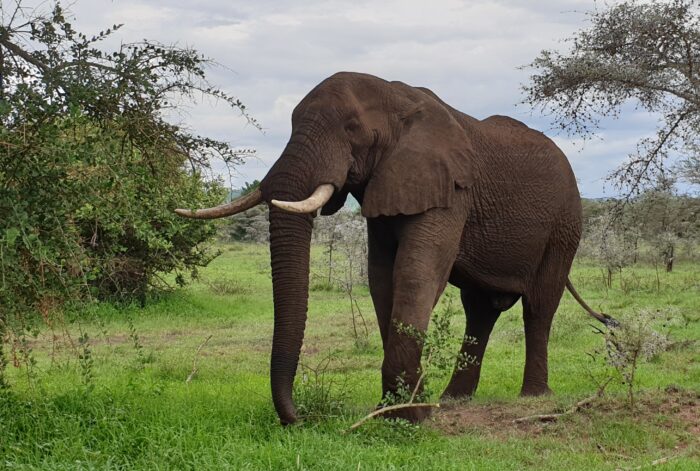Report on the *Status and Viability of Wildlife Corridors in the Maasai Mara Ecosystem’* Launched
Date
October 22, 2020
The Status and Viability of Wildlife Corridors in the Maasai Mara Ecosystem’ report is an Initiative for Conservation of Mara-Serengeti Transboundary Ecosystem (SEMA Project).
The report, highlights and compares the changes in wildlife movement patterns based on the past and will help highlight key wildlife corridors to kick off dialogues/commitments with stakeholders on interventions and help secure them.
The SEMA Project contributes to the conservation of the Mara-Serengeti Transboundary ecosystem through empowering local communities to adopt sustainable livelihoods and enhancing regional cooperation. The action supports cross-regional wildlife conservation and natural resources management by enhancing intra and inter country dialogues and participatory decision making among government and other stakeholders on policy, legal and regulatory frameworks. The Mara Serengeti transboundary ecosystem is renowned for its spectacular wildlife and scenery. It comprises multiple resource use areas and different categories of protected areas, communal and private lands extending from South-Western Kenya and into Northern Tanzania. SEMA project through technical support from Kenya Wildlife Service and Tanzania Wildlife Research Institute undertook mapping of wildlife corridors in Maasai Mara and Serengeti ecosystems respectively and came up with reports on the status and viability of wildlife corridors in their respective ecosystems.

Maasai Mara Ecosystem is a key biodiversity hotspot, which supports large numbers of flora and fauna. This ecosystem is facing a lot of pressure from human population increase thereby reducing space for wildlife through land use changes. Wildlife corridors are important physical connections and linkages between isolated habitats, as is now the case in the ecosystem. The corridors promote the survival of species in environments hence maintaining landscape patterns and ecological processes. Vision 2030 identifies securing of wildlife dispersal areas and migratory corridors and pathways as significant ingredients of sustainable eco-tourism. Wildlife disperse or migrate across landscapes to access vital resources such as pasture, water, and breeding grounds; to reduce the risks of predation; and to enhance genetic health. Wildlife migratory corridors connect core habitats and are critical for species’ survival and long-term viability of ecosystems. It is therefore the duty of KWS and its stakeholders to ensure that wildlife habitat and corridors are protected for posterity. The main objective of the study was to best understand current general wildlife movement patterns and compare with previous movements, further leading to the assessment of the factors contributing to the drastic change in the movement from the previous to the current status along the Narok-Sekenani road in Maasai Mara ecosystem. A total of nine corridors were identified which were subjected to a prioritization matrix and corridors #1, #6 and #3 (Figure 6) were prioritized as important corridors and that require quick interventions in order to secure them. The corridors were prioritized based on attributes which may have positively or negatively influenced viability as a corridor. Positive attributes included presence of elephant dung, proportion of wild animals sighted within 200 meters and water availability. Those attributes which negatively impacted on the corridor included presence of livestock, permanent mabati roofed or concrete houses, grass thatched or cow dung huts (Maasai Bomas), threats such as charcoal and logging, presence of alien invasive plant species and presence of fences (electric, plain and barbed wire).